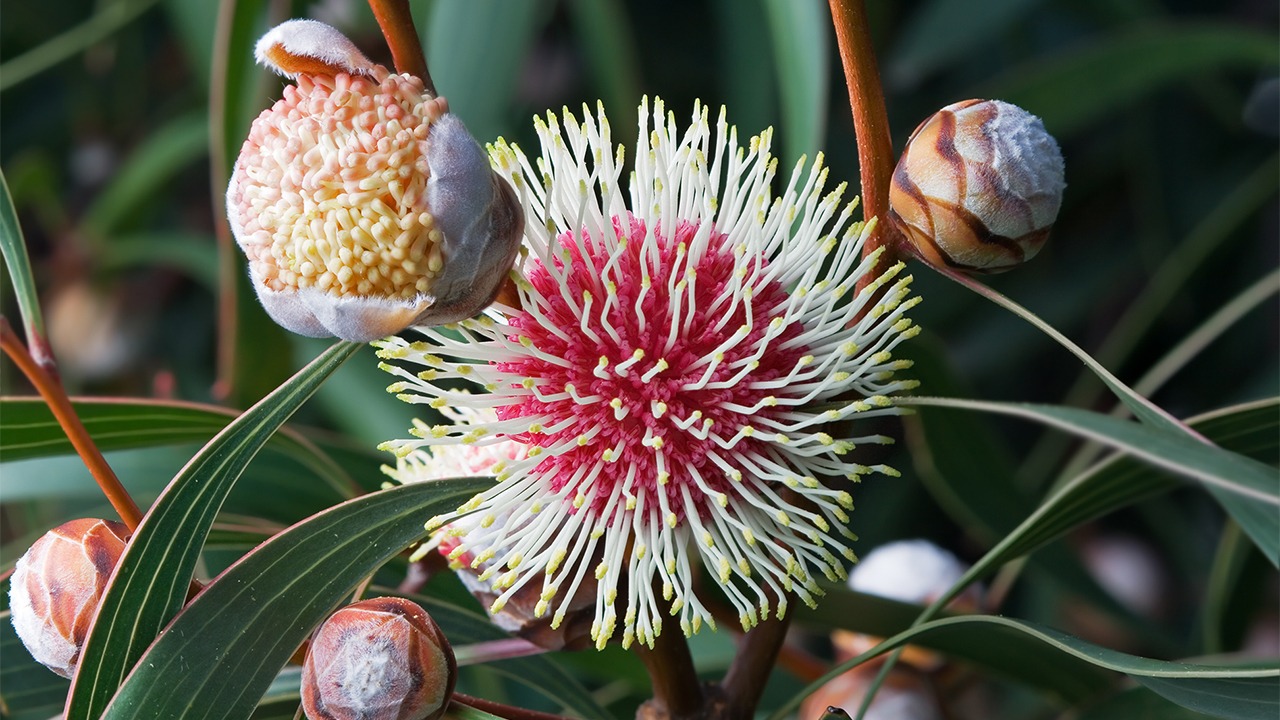
Hakea is a genus of flowering plants that belong to the Proteaceae family, primarily found in Australia.
These evergreen shrubs or small trees are known for their unique and striking appearance. They are characterized by their needle-like or flat leaves, often arranged in dense clusters, and their intricate and eye-catching inflorescences. Hakea flowers come in various colors, ranging from white and cream to shades of pink and red, attracting pollinators like birds and insects.
One of the distinctive features of Hakea is its fruit, a woody seed pod that usually contains two winged seeds. These seed pods open in response to fire, ensuring their seeds’ release and germination in the newly cleared landscape.
Hakea plants have adapted to diverse environments, from coastal regions to arid inland areas, making them an essential part of Australia’s natural biodiversity. Gardeners and horticulturists appreciate Hakea for their beauty and resilience, often cultivating them in landscapes and gardens worldwide.
